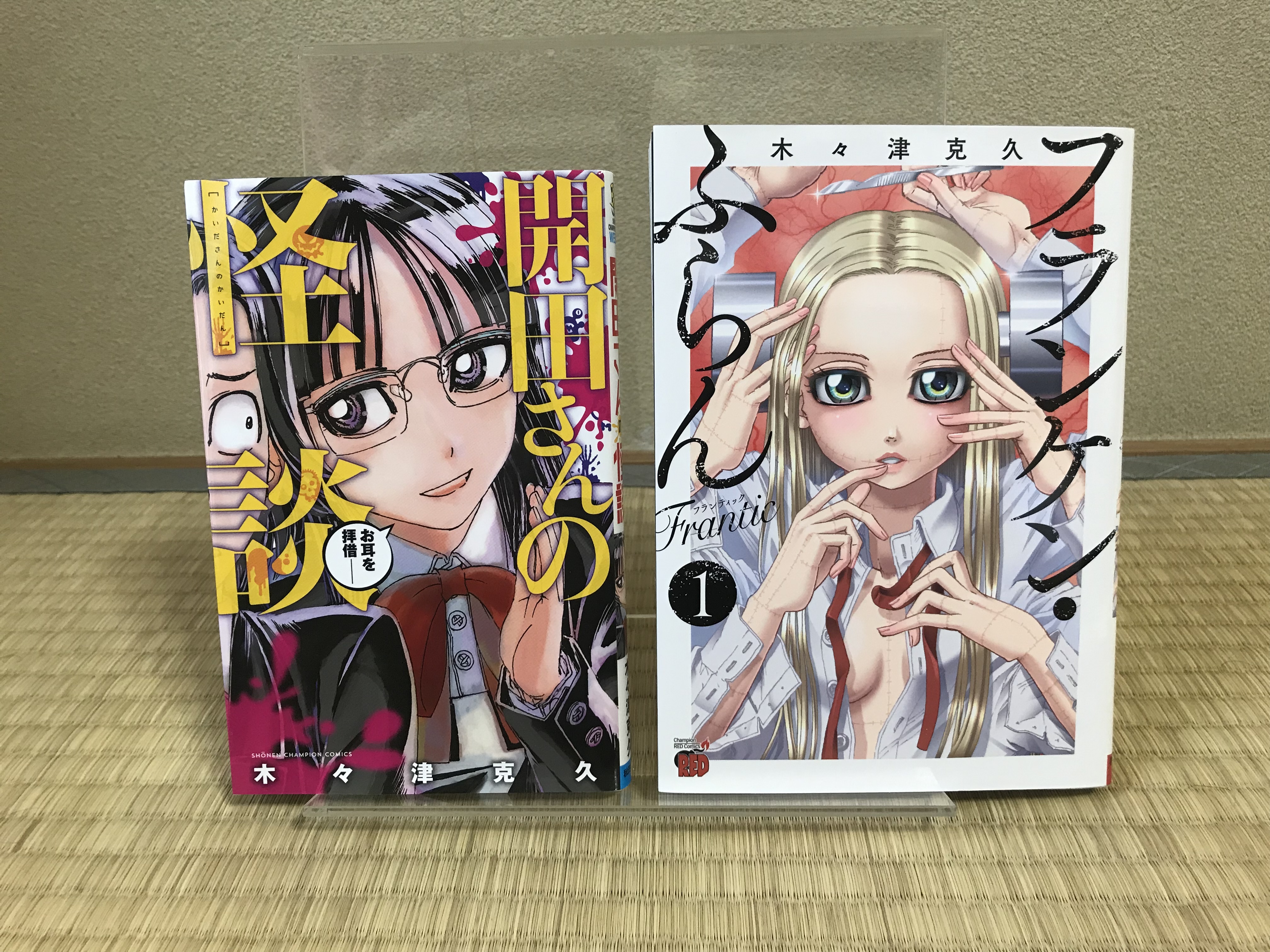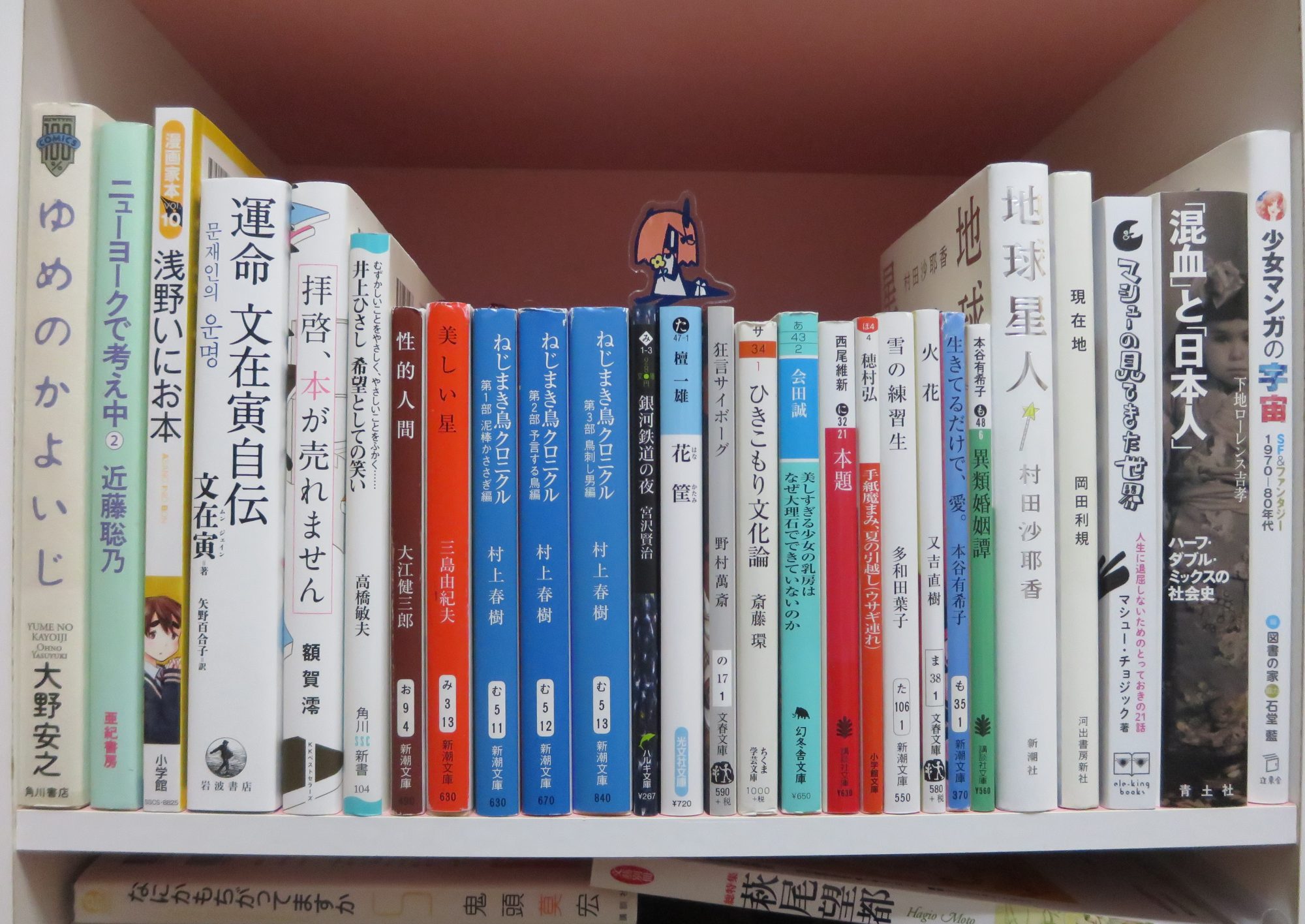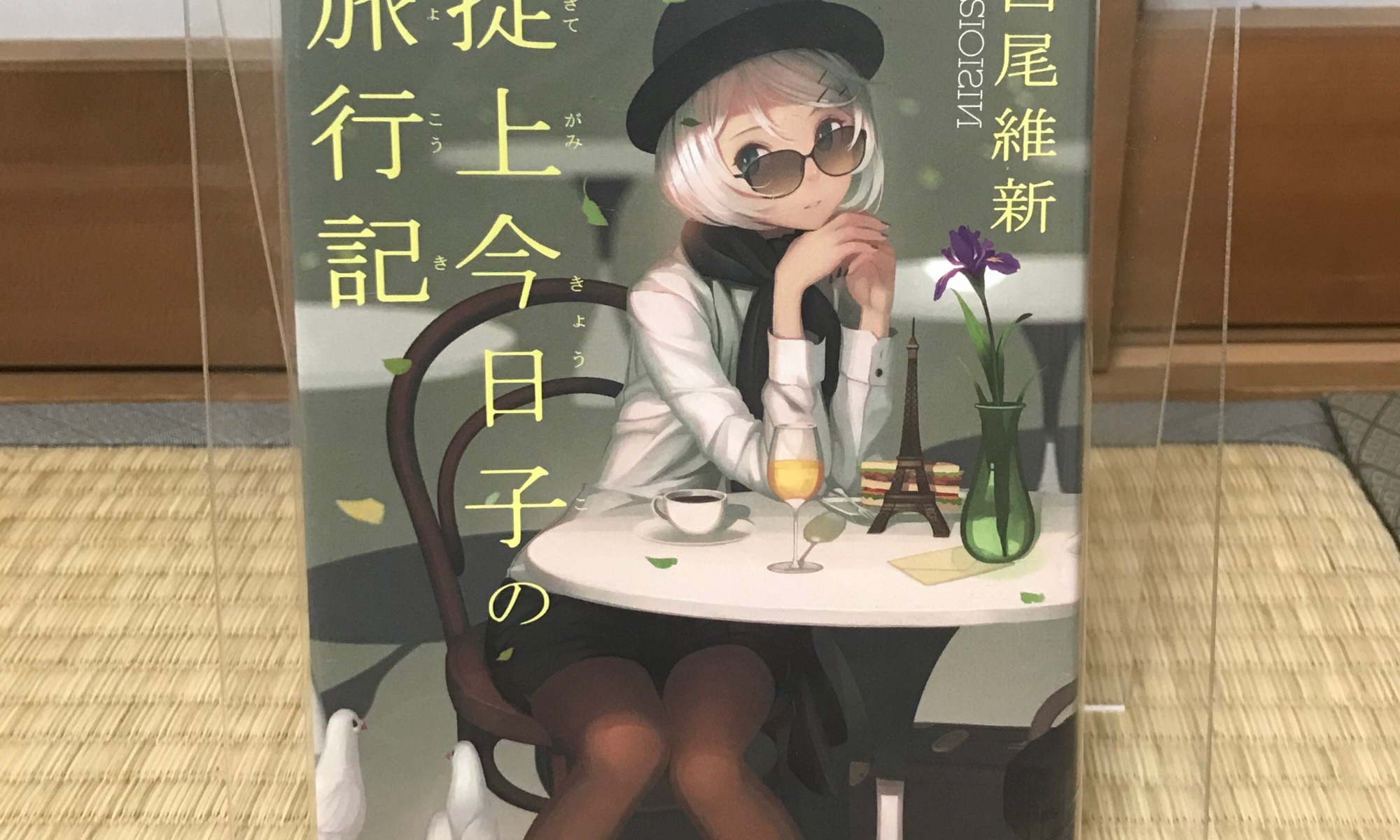Ever since I started reading manga and watching anime at an early age, I learned a lot about Japanese culture, as well as different cultures around the world, including my own. Japanese artists are not as insular as commonly believed. They take inspiration from all kinds of media and genres outside of manga and Japanese animation. Tezuka Osamu is said to have watched one film a day for a whole year and remained a film maniac throughout his entire live, just as Urasawa Naoki, who also famously takes inspiration from Rock Music (“20th Century Boys”). “One Piece” creator Eiichirō Oda is well known for his love of Kabuki and Edo Japan, long before the current Wa no kuni-arc. Or take a look at the artistic influences on Miura Kentarō’s “Berserk”.
Continue reading “Cross-reading Recommendations Part 1”E-Manga reviews #1: Inuyashiki and Ijiranaide, Nagatoro-san
The Amazon kindle store is far from becoming the Netflix of Manga, but from time to time it offers free samples of whole volumes (to make you want to buy the rest of the series). If you have a Japanese kindle account, it is worthwhile checking out the kindle store occasionally. The last time I did, I downloaded almost 40 volumes for free, including really popular titles like “Anjin” (3 volumes), “Blame” and the two titles I review in this article.
As these downloads give me the chance to try out manga I would probably not start reading if I had to pay for them (there is no manga cafe I could go to either), I’m excited to see what I discover and I’ll try to update these kind of reviews throughout the year.
Continue reading “E-Manga reviews #1: Inuyashiki and Ijiranaide, Nagatoro-san”Akagawa Jirō – Futari
 The cover illustration was drawn by Ōshima Yumiko of the Year 24 Group. ©︎Shinchōsha
The cover illustration was drawn by Ōshima Yumiko of the Year 24 Group. ©︎ShinchōshaAkagawa Jirō is a highly prolific and popular novelist in Japan, having produced almost 600 novels and short stories in more than 40 years of writing. Yet the only title of his that sounded familiar to me was “Sailor Suit and Machine Gun”, because of the recent film adaption, which I have not seen. So what made me read the 1989 novel “Futari”? Continue reading “Akagawa Jirō – Futari”
Volume 1 Manga Marathon – Part 2
Here’s part two of my manga marathon series. You might have noticed that last time I solely featured female mangaka, so here is the male counterpart. However, I just noticed every single series features a female protagonist. I don’t know whether this tells more about more or about the state of the manga industry. Anyway, let’s start with the first series: Continue reading “Volume 1 Manga Marathon – Part 2”
Volume 1 Manga Marathon – Part 1
Preparing to move out of my apartment, I couldn’t ignore the pile of manga volumes I accumulated the last months. Should I sell them or send them home? It was time to finally get some reading done of series I wanted to try out for a long time. Therefore the following two parts contain short reviews of the first volume of several manga. Enjoy! Continue reading “Volume 1 Manga Marathon – Part 1”
Nisioisin – Okitegami Kyōko no ryokōki

Volume 8 of Nisioisin’s “forgetful detective” series, “Okitegami Kyōko’s Travel Log”, takes us, as the cover implies, to Paris. Cursed with bad lack, Yasusuke has to leave Japan for a reason I don’t know, since I’ve only seen the TV drama some years ago (more on that in the trivia section).
Continue reading “Nisioisin – Okitegami Kyōko no ryokōki”Kigitsu Katsuhisa: Kaida-san no kaidan / Franken: Fran Frantic

1. “Kaida-san no kaidan”
If the absurd and completely random plot summaries at the beginning of every “Sayonara Zetsubo-Sensei” volume got their own manga, sprinkled with Junji Ito style body horror, “Kaida-san no kaidan” (Kaida’s scary stories) would be the result. But why the namedropping? Kigitsu Katsuhisa has a reputation for twisted story-telling that doesn’t need to shy comparison. His art is unique and his talent to create twisted, episodic storytelling lead to some of the most ingenious and memorable manga shorts I have ever read (two words: Spaghetti monster). Continue reading “Kigitsu Katsuhisa: Kaida-san no kaidan / Franken: Fran Frantic”
Wisut Ponnimit – Him Her That

How long did it take for me to fall in love with this manga? Three pages to be accurate. Three pages into the first chapter, a young woman laments over what the Atlantic has called “future ennui“. With a sultry face she states: “Tea comes only as capsules now… Romance is dead”, nibbling on one of the said, sad capsules. Continue reading “Wisut Ponnimit – Him Her That”
Nisioisin – The Veiled Man Hypothesis

Largely due to the continuous popularity of the never-ending Monogatari-series, Nisioisin has become a household name in Japan’s anime industry as well as its bookstores. Since his debut seventeen years ago, he has written hundred novels (leaving out novelizations and several short stories), which means he produced about six novels every year. His 100th novel, ヴェールドマン仮説 (“The Veiled Man Hypothesis”), appears to be a return to the beginning of his writing career. To understand Nisioisin’s writing one has to consider that he started as an author of mystery novels. Despite having moe character decorate its cover, his debut novel Zaregoto 1: The Kubikiri Cycle is a more or less solidly crafted detective story. It made him win the Mephisto Prize for mystery literature in 2002.
Continue reading “Nisioisin – The Veiled Man Hypothesis”Nisioisin – Zerozaki Hitoshiki no Ningen Kankei: Niounomiya Izumu to no Kankei
The events take place before Zaregoto, but after “Zerozaki Kishishiki no Ningen Knock”: Our protagonist Zerozaki Hitoshiki, homicidal maniac and middle schooler in disguise, and for some reason Saijō Tamamo (the berserker school girl from “Kubitsuri Highschool”) get tangled up in Niounomiya Izumu’s (suicide) mission to assassinate Kunagisa Nao, Tomo’s charismatic and highly influential brother. The three march straight through a mountain range owned by the Kunagisa Organisation like characters in a 2d RPG, and are confronted by Nao’s bodyguards, the three Naoki siblings (whose family name, Hitoshiki points out, “totally not sounds like that of a prewar literary scholar as well as of a literary prize”).
This volume is the first of four exploring everyone’s favorite Zerozaki, Hitoshiki, and his relationship to other characters of the series. Like in the prologue of Goethe’s “Faust”, where God and Devil dispute on the fate of Faust, it opens with Aikawa Jun and Ishimaru Kouta disputing over the fate of a young girl (should I be proud or ashamed of that analogy?). Cynical master thief and the only person in the world who can piss off Jun-san and live, Ishimaru Kouta, is one of my favourite characters in the whole Zaregoto universe and I’m glad she got at least some pages to shine (her part in the audio commentary of the fourth Zaregoto Blu-Ray didn’t please me at all, but that’s another story).
Niounomiya Izumu is, judging from the fan art circulating on the internet, one of the most popular characters of Zaregoto, despite having murdered his way through other beloved characters on his first appearance in “Hitokui Magical”. Introduced as byproduct of the 13th experiment of the Nionomiya killing family (which Nisio never cared to explain), Izumu is a 13 year old boy who shares the body of an 18-year old (flat-chested) girl with his sister Rizumu. Izumu is a killer, Rizumu a detective. He kills, she solves crimes. Or at least that was supposed to be the original setting, but who wants to see a helpless detective girl solving crimes, when one can have a maniac killer inside a (flat-chested) girls body who doesn’t care to wear a bra beneath his leather jacket?
Apart from Izumu, we get some background and Saijō Tamamo, and one single line of dialogue in the entire volume, but one that says a lot about her. The narration points out, a story written from her perspective would just have the camera following behind her. What she lacks in talkativeness, she makes up for in insanity. Also, we see a bit of Nao, whose noble existence who has not appeared in character in the main series, and a certain eyewear fetishist has his unnerving appearance.
Not much plot, lots of blood. The three Naoki’s are painfully forgettable battle fodder and most likely became the model for the Maniwa Ningun in “Katanagatari”. In the end, Izumu goes full “Deadman Wonderland” and a beautiful relationship of happy manslaughter begins.
I know, the Ningen series is about fighting. And complaining that is not something else is silly. But deep inside I longed for a sequel with Rizumu as protagonist happily solving cases. I don’t care if Izumu slaughters the culprit afterwards.
Highlight: Kunagisa Nao saying 「うにっ」(“uni!“) as the events turn out to benefit him.
Favorite wordplay: Ishimaru Kouta saying: 「石丸小唄の口調は慇懃であって無礼だった。」which is a word play on the 4-character compound 慇懃無礼 (ingin burei), which roughly translates as being “polite on the surface, but rude in intent”. A clumsy translation would be: “Ishimaru Kouta’s tone was polite, yet not polite at all.”
Next novel of the series on my reading list: “Zerozaki Hitoshiki no Ningen Kankei”. But before that, there is Nisio’s 100st novel “The Verdman Hypothesis”, which I will hopefully start reading on its release date.











